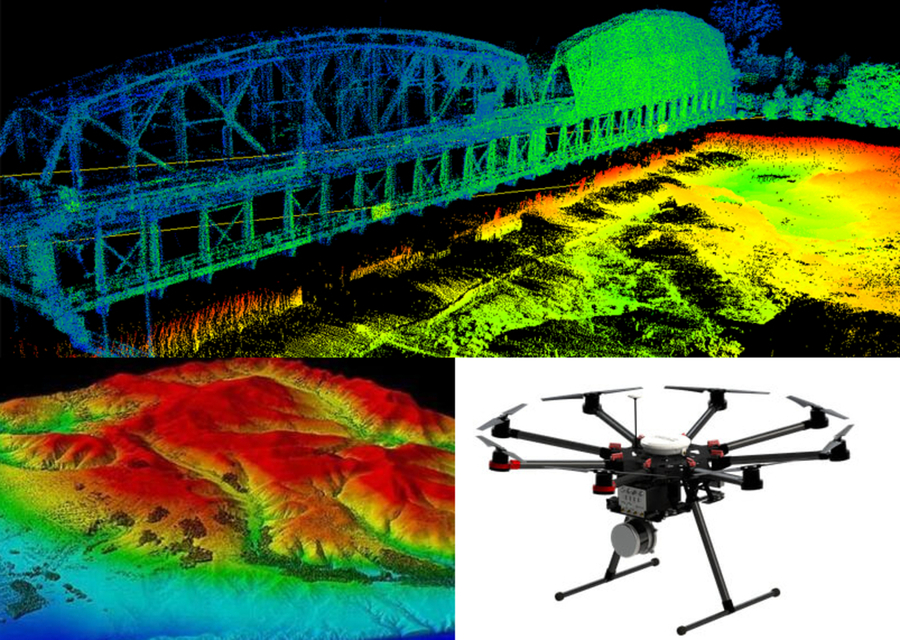In recent years, the construction business has undergone the dramatic transformation, motivated by technological breakthroughs that are reshaping exactly how projects are organized, executed, and monitored. Among these innovations, drone surveying has emerged as a game-changer, offering unequalled benefits in reliability and efficiency. By providing detailed web site assessments to assisting real-time data collection, drones are reforming the way structure professionals approach their own work, ultimately resulting in smarter decision-making and cost savings.
As the demand for streamlined processes and improved precision grows, understanding the applications and benefits of drone surveying gets increasingly essential. If you are a seasoned design manager or a new newcomer for the market, grasping the fundamentals involving drone technology and its implications regarding surveying can give an important edge. Found in this article, you will explore the deep impact of drone surveying on structure and delve into various aspects, which includes its benefits, typically the technology behind it, and how it is set to form the future of the industry.
Positive aspects of Drone Surveying

Drone surveying offers quite a few advantages that usually are transforming the construction landscape. One of the primary advantages is enhanced precision. Drones utilize innovative technology such since GPS and high-resolution cameras, which enable these to capture accurate data and create detailed maps. This kind of increased accuracy reduces errors which could arise with traditional surveying methods, leading to a lot more reliable project final results. Additionally, the capability to conduct research in a quicker timeframe allows assignments to move in advance more proficiently.
Cost benefits are another important benefit associated with drone surveying. Putting into Drone Surveying Cheltenham might reduce labor charges and the requirement for expensive equipment typically required for conventional surveys. Drones may cover large locations quickly, collecting data with no extensive staff members historically needed with regard to ground surveys. Therefore, the reduced period and resources lead to lower overall job costs, making drone surveying an appealing strategy to construction firms planning to improve their bottom line.
Moreover, drone surveying enhances security on construction sites. Drones can entry difficult or dangerous areas without getting surveyors at risk. This capability will be particularly invaluable within situations where landscape is challenging or perhaps when surveying current structures with potential safety concerns. By minimizing the require for personnel in order to work in dangerous locations, drone surveying not only protects workers but also ensures that information collection is in depth and thorough with out jeopardizing safety criteria.
Manual and automatic transmissions Surveying Methods
Traditional surveying methods have already been the cornerstone of land measurement for many years. Methods such as theodolite measurements and full station surveys demand skilled personnel in order to establish precise items and gather info manually. This process may be time-consuming and labor-intensive, often leading to delays and larger costs for design projects. Additionally, standard methods are restricted to weather conditions in addition to can find it difficult to cover up large areas efficiently.
Inside contrast, drone surveying has introduced the revolutionary way of info collection. Drones prepared with advanced cams and sensors can easily capture vast quantities of data over big terrains from large altitudes. This soaring perspective not just increases coverage nevertheless also allows with regard to more accurate measurements plus detailed mapping with no the constraints experienced by traditional methods. The ability to be able to collect data rapidly enables faster job timelines and even more informed decision-making.
Moreover, the particular integration of smart technology in drone surveying contributes significantly to the accuracy and reliability of data. Drones leveraging GPS as well as other placement technologies to produce high resolution maps and THREE DIMENSIONAL models with minimal human input. This particular level of accuracy is challenging to attain with manual approaches, enhancing the total quality of surveys online. Because the construction market continue to be adopt drone technology, the comparability between traditional procedures and drone surveying becomes increasingly positive for efficiency in addition to effectiveness.
Way forward for Drone Technologies
Typically the future of drone technology in the particular construction industry is definitely poised to take even greater innovative developments that can drastically improve the efficiency plus accuracy of jobs. With Drone Surveying Cheltenham in artificial intelligence in addition to machine learning, drones are expected to turn into more autonomous, permitting for real-time info collection and examination without the regular need for human input. This can not only streamline workflows yet also reduce the margin for mistake, bringing about safer in addition to more effective structure processes.
Moreover, the integration of drones to growing technologies, like Developing Information Modeling (BIM) and augmented reality, will offer project managers and technical engineers unprecedented insights within their projects. By merging aerial data taken by drones with detailed 3D types, construction teams might monitor progress, imagine potential issues, and make informed decisions faster than ever just before. This synergy between technologies will enhance collaboration among stakeholders and drive task success.
Finally, as regulations around drone consumption continue to progress, we can count on broader acceptance and even integration of drone surveying across various sectors. The legitimate frameworks will more than likely adapt to permit more complex applications of drone technology, including past visual line involving sight operations and increased payload abilities. This will clear new possibilities regarding construction, including superior site inspections and maintenance procedures, ensuring that will drones will stay a vital component of the construction surroundings for a long time to arrive.
